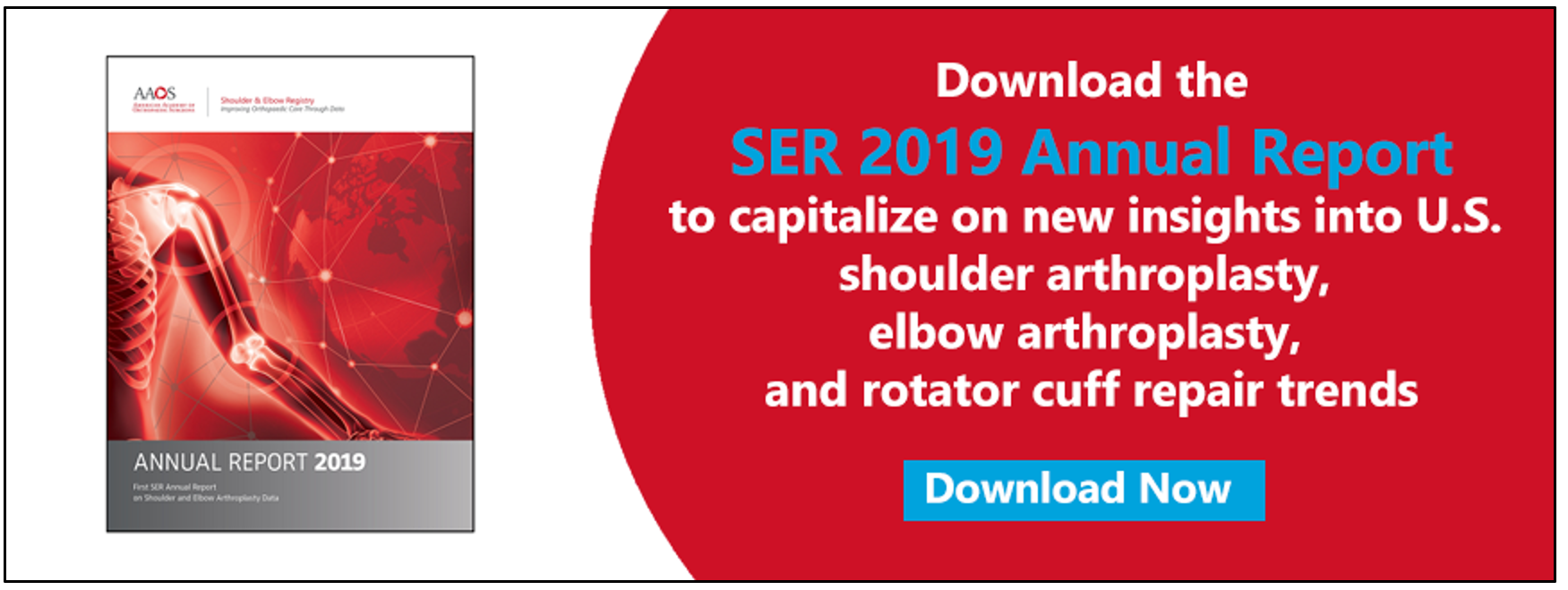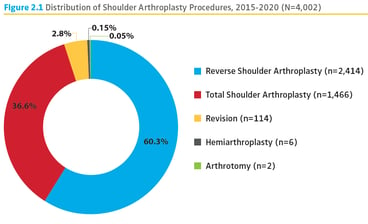
Guest Blogger: American Academy of Orthopaedic Surgeons (AAOS) Registry Program Committee Member Richard Seiden
Richard Seiden is the AAOS Registry Program Public Advisory Board (PAB) Chair and the PAB Representative on the American Joint Replacement Registry (AJRR) and Shoulder & Elbow Registry (SER) Steering Committees. In this blog, he shares his personal experience as a joint replacement surgery patient (he’s had hip replacements, knee replacements, and shoulder replacements). Mr. Seiden offers reverse shoulder arthroplasty patients helpful advice to better prepare for dealing with post-surgery needs. He indicated that he hopes sharing his experience will be helpful to other patients, but his advice is not a substitute for consulting with your physician.
9 Post-Surgery Suggestions
1. In my experience, you may not want to have both shoulders done at once, because it will prevent you from being able to eat, bathe, and do other simple functions. Expect a full recovery to take 9-12 months, but you should be functional by three months. You may not be able to drive for six to eight weeks.
2. After the surgery, try not to lift more than five pounds with the arm with the replaced shoulder. To maintain shoulder range of motion, continue to do those exercises recommended by your physical therapist during your recovery period and beyond, including reaching upward to the extent possible. Remember that it is important to maintain the tone of muscles around the shoulder despite the replacement.
3. Remember that your remaining rotator cuff may have been supplemented with favored use of the deltoid muscle, which may limit your range of motion. Expect that you may no longer be able to reach behind your back as well. You may need a scrub brush with a long handle to clean your back in the shower or bath, and you may need a head scratching device with a handle for shampoos.
4. I bought myself a scratching device since I was unable to reach my back.
5. I found it difficult to shave with a blade, therefore men may find it faster to use an electric razor to shave, or may want to consider growing a beard to simplify morning preparations for the day.
6. I found the following tips useful when I dressed:
a. I put my belt through my pant loops before putting on my pants because I wasn't able to reach behind my back to put on my belt.
b. Tying a tie may be more difficult, especially after both shoulders are replaced, therefore I lift up the collar in the back to put on a tie. You might try to put on the tie loosely before putting on the shirt.
c. You may need to buy shirts with slightly larger neck size to ease the buttoning of the top button. You may also find it easier to avoid button-down collars.
d. Putting on a coat or jacket was more difficult for me after both my shoulders were replaced. So, I place the tighter shoulder in the jacket first. Then I pull the other side of the jacket above the shoulder to enable me to slide the hand into the opening. Having someone else assist me works well. It is usually easy to find someone to help when they see you are struggling, and it is easy to explain your needs in very few words.
7. You might consider the purchase of a reaching device to pick up overhead items in a closet or elsewhere. If you have previously stored key items overhead in closets or kitchen cabinets, you may want to relocate those items prior to the surgery.
8. Expect to need assistance with the replacement of overhead light bulbs. Consider replacing all overhead lighting with LED bulbs which will reduce the need for frequent replacements (and they are more energy efficient anyway).
9. You may find that you may have to adapt your swimming techniques; the overhead crawl and butterfly may be too difficult after the surgery. In my experience, usually the breast stroke will work.
And here are three extra tips for when things return to normal after the COVID-19 pandemic:
1. Raising your hand/arm to be called upon at a meeting may be challenging. Alert the speaker to this problem before they begin if you plan to be an active participant.
2. When traveling alone, be prepared to check any luggage that is too big to fit under the seat in front of you. Lifting a bag to place it in the overhead bin is one of the worst mistakes you can make after the shoulder has been replaced. It puts too much strain on the replaced shoulder. Make a conscious effort to buy the lightest luggage possible, and with four wheels and a handle.
3. You may find it necessary to ask strangers for help with simple tasks. It may surprise you how quickly people will agree to assist you.
A Registry to Help Reverse Shoulder Replacement Patients
The AAOS Shoulder & Elbow Registry (SER) is a database that collects information on shoulder replacement, elbow replacement, and rotator cuff repair procedures from medical institutions. It was created in collaboration with shoulder and elbow specialty societies to improve the quality of care for all patients. The SER provides greater context to patient outcomes for participating medical sites and assists with the treatment decision-making process.
The SER recently released its first Annual Report, which represents submitted shoulder and elbow procedures (including reverse shoulder replacements). The SER is growing, and there are now more than 94 participating facilities including hospitals, private practices, and ambulatory surgery centers spanning 26 states across the United States. In total, more than 9,430 patient procedures have been submitted.
Are you interested in learning more about shoulder and elbow surgery outcomes in the U.S.? The SER 2019 Annual Report can be downloaded at no cost.
Be sure to leave a comment in the form below!




